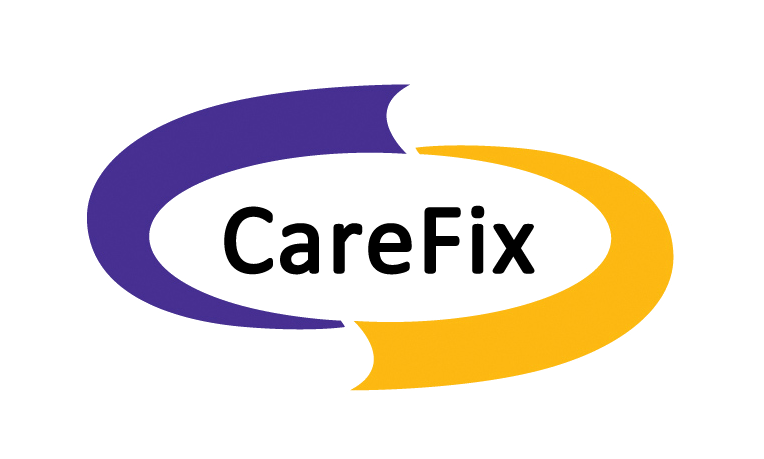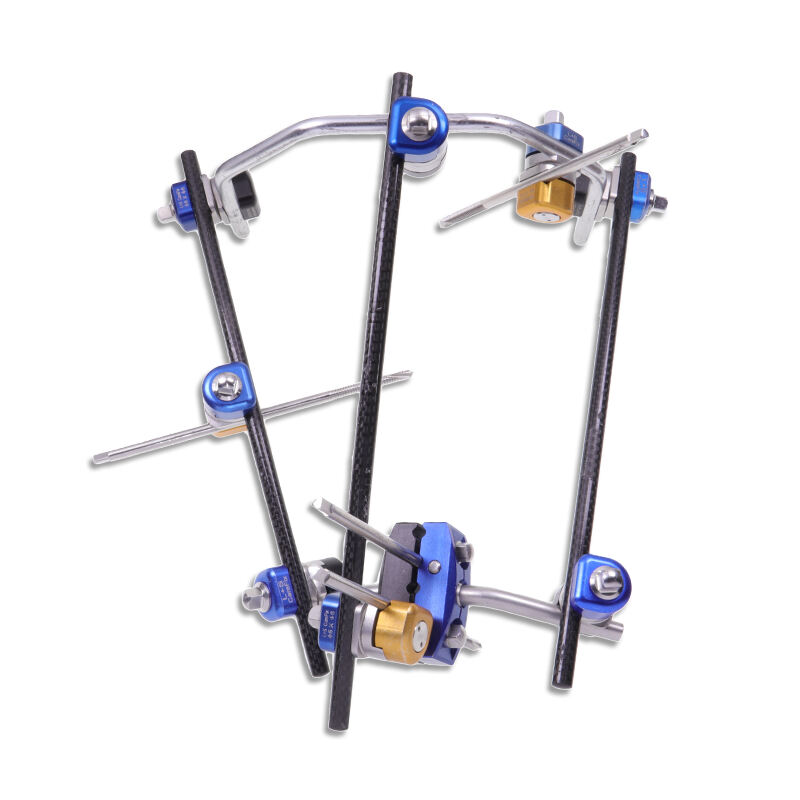Introduction to Modular Braces in Modern Orthopedics
Modular braces represent something pretty special in orthopedics because they're built to be customized easily according to what each patient actually needs. What makes these braces stand out is their design featuring parts that swap out and adjust depending on different types of injuries or health issues. Doctors and therapists find this really helpful since they can fine tune the support levels without having to start from scratch every time. The whole point behind this customization focus is simple: better outcomes for people dealing with all sorts of musculoskeletal problems. Patients get braces that fit not just their body but also how active they need to stay during recovery periods, which means faster healing times and less discomfort overall.
Defining Modular Braces: Adaptability in Design
Modular braces have become something special in orthopedic treatment because they can actually change shape and function based on what the patient needs. The basic idea is simple enough these days: most of these braces come in pieces that doctors or therapists can swap around depending on how bad an injury is or what stage someone is at in their healing process. This kind of flexibility means we aren't stuck with one size fits all anymore. For instance, if someone breaks their wrist differently than another person, the brace doesn't need to look exactly the same for both patients. That makes a big difference in how well people recover from different kinds of injuries. Orthopedic clinics across the country are starting to adopt this approach since it lets them create solutions that really match up with each individual's progress through rehab rather than just following generic guidelines.
Key Benefits: Customization, Comfort, and Dynamic Functionality
Modular braces offer better comfort for patients because they can be tailored to fit each person's unique body shape and structure. These braces aren't just static devices either they actually move with the body, letting people go about their normal routines without feeling restricted. This makes a big difference in how comfortable someone feels during treatment. Research shows that patients wearing modular braces tend to recover faster than those with traditional options. Doctors have noticed shorter healing times across various cases where these adjustable supports were used. For anyone dealing with orthopedic issues, this means getting back to regular activities sooner rather than later.
Modular Braces in Trauma Management: Stabilization and Flexibility
Fracture Stabilization with Adjustable Support Systems
Modular braces with adjustable supports are really important for keeping fractures stable so they heal properly. What makes these braces special is their adaptability - doctors can set them up to give extra support right after an injury occurs, and then tweak them as the patient starts to recover. Studies have found that patients who wear these adjustable braces tend to get better stabilization than those stuck with old fashioned fixed braces. When medical professionals can adjust the level of support based on how each individual is progressing, it leads to better overall results for managing broken bones and actually speeds up the healing process quite a bit in many cases.
Dynamic Alignment for Complex Injuries
Modular braces really stand out when dealing with complicated injuries because they can adjust on the fly thanks to those movable parts. Doctors can tweak them during checkups so the patient stays properly aligned despite changes in swelling levels or as the body heals over time. Studies have actually shown that these braces help people recover faster after major accidents compared to traditional methods. The fact that they adapt makes all the difference since trauma recovery isn't static at all. Patients get something tailored specifically to their needs instead of just another one-size-fits-all solution.
Case Studies: Rapid Response in Emergency Scenarios
Case studies show how modular braces work well during emergencies when stabilizing injuries fast matters most. Hospitals report fewer complications after using these braces because they can get applied so quickly. Treatment time drops significantly too, which means better results for patients overall. Data from trauma centers across the country backs this up, showing why many ERs now keep modular braces on hand. Doctors appreciate being able to grab a brace that fits different injury types without wasting precious minutes searching through equipment cabinets during critical moments.
Orthodontic Applications: Precision in Tooth Movement and Alignment
Gradual Force Application for Controlled Tooth Movement
What makes modular braces stand out in orthodontic work is how they apply force gradually over time. The slow pressure approach leads to better control when moving teeth around, which means dentists can predict outcomes more accurately. These braces keep applying light pressure without going overboard, so there's less chance of hurting the gums and other soft tissues near the teeth something that happens quite often with older brace systems. Research done at Istanbul Aydin University's orthodontic department shows people actually feel much less pain while wearing these types of braces compared to conventional ones. For many patients, this comfort factor makes all the difference, and explains why so many dental professionals are turning to modular options these days instead of sticking with traditional methods.
Versatility in Treating Malocclusions and Jaw Deformities
Modular braces have a lot going for them when it comes to fixing different kinds of bite problems and jaw issues. They work really well because they can be customized to fit each person's unique situation. Doctors and orthodontists love working with these braces since they're easy to tweak throughout treatment if something changes or new issues come up. Research shows most people get good results with modular systems, especially those dealing with complicated bite misalignments. Patients tend to be happier overall with their treatment experience. For dental professionals, this flexibility means having a tool that works across many different cases. The braces adapt nicely to whatever challenges present themselves, helping teeth line up properly while also making sure long term dental health stays on track.
Integration with Multidisciplinary Treatment Plans
When we bring modular braces into the mix of multidisciplinary treatment plans, patient care gets a real boost. These braces help different specialists work together more effectively - think orthodontists, general dentists, and maxillofacial surgeons all on the same page. The result? Treatment that tackles both teeth alignment problems and underlying bone structure issues at once. Research points to improved results when multiple experts coordinate their efforts, especially for those tough cases where someone might need braces plus surgery or other interventions. Working as a team speeds things up and generally leads to better long term success rates, which is why many practitioners now consider modular systems essential for handling complicated orthodontic situations.
Comparative Advantages Over Traditional Orthodontic Systems
Flexibility vs. Rigidity: Adapting to Changing Clinical Needs
Modular braces stand apart from conventional orthodontic options because they can adapt as treatment progresses and patient needs change over time. Traditional metal braces typically demand regular check-ups where major changes are made, while modular systems let dentists tweak things on the fly during routine cleanings or even between scheduled appointments. Fewer trips to the office means less disruption in daily life for everyone involved. Research into this area shows most people actually prefer handling their modular appliances since they're generally easier to keep clean and don't interfere as much with eating habits, which leads to better adherence to prescribed treatments overall.
Cost-Effectiveness and Reduced Chairside Adjustments
Modular braces offer real savings in orthodontic treatment because they cut down on how many times patients need to come into the office for adjustments. Practices find their running costs go down when there's less back and forth between appointments. Studies show clinics that switch to these systems typically see better bottom lines since they can treat more patients without stretching staff too thin. The whole process just works smoother from start to finish. Patients get happier with less disruption to their daily lives while dentists maintain good business health without compromising quality of care.
Future Trends: Smart Modular Braces in Digital Dentistry
Bringing smart tech into modular braces represents one of the big trends we're seeing in digital dentistry right now, and it's changing how orthodontic treatments work. These new braces can track progress as it happens, giving patients instant updates about their teeth moving into position. The field of orthodontics is definitely moving forward fast. We've started seeing artificial intelligence and machine learning built directly into these modular systems. This means doctors can create treatment plans that actually match each person's unique situation instead of following generic protocols. Patients benefit from better results because their treatment adapts to their actual needs throughout the process. With all these advancements happening so quickly, modular braces look set to remain among the most cutting edge options available for straightening teeth.
FAQs About Modular Braces
What are modular braces?
Modular braces are adaptive orthopedic devices crafted with interchangeable components, designed for personalized support and enhanced treatment outcomes.
How do modular braces benefit orthopedic treatment?
The customizable design of modular braces improves patient comfort, facilitates dynamic functionality, and accelerates recovery times, enhancing therapy effectiveness.
Why are modular braces preferred in orthodontics?
Modular braces provide gradual force application, reducing tissue trauma and discomfort. Their versatility suits complex malocclusions, offering tailored treatment and high success rates.
Are modular braces cost-effective?
Yes, modular braces reduce the need for frequent adjustments, lowering operational costs for practices while enhancing patient satisfaction.
What role do modular braces play in modern dentistry?
With advancements in smart technology, modular braces offer real-time monitoring, contributing to personalized treatment plans and pioneering digital dentistry trends.


